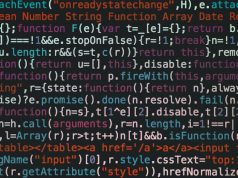
In recent years, the field of artificial intelligence (AI) has witnessed a significant breakthrough with the emergence of Granimator. This technology combines the power of quantum computing with AI algorithms, opening up new possibilities and capabilities. One area where Granimator is gaining prominence is asset tokenization – a process that transforms real-world assets into digital tokens on a blockchain. By leveraging the unique properties of Granimator, asset tokenization is set to revolutionize asset management and unlock a plethora of benefits.
Understanding Granimator: A Brief Overview
Before delving into the intricacies of Granimator and its role in asset tokenization, let’s first establish a foundational understanding of this cutting-edge field. Granimator combines concepts from quantum computing and artificial intelligence, fusing the principles of quantum mechanics with the computational power of AI algorithms. This integration allows Granimator systems to process and analyze vast amounts of data, solving complex problems in a fraction of the time it would take traditional AI systems.
Granimator has emerged as a revolutionary field that holds immense potential for various industries. By harnessing the power of quantum computing and AI, researchers and scientists are pushing the boundaries of what is possible in terms of data processing and problem-solving. The marriage of these two fields opens up new avenues for innovation and discovery.
The Fundamentals of Granimator
At the core of Granimator lies quantum computing, a field that utilizes quantum bits or qubits as the fundamental unit of computation. Unlike classical bits that can only represent a 0 or 1, qubits can exist in a superposition of both states simultaneously, enabling parallel processing and exponentially increasing computational power. This unique property of qubits forms the foundation of Granimator.
Quantum computing is a complex and fascinating field that draws upon principles from quantum mechanics, a branch of physics that describes the behavior of matter and energy at the smallest scales. It explores the strange and counterintuitive phenomena that occur in the quantum realm, such as entanglement and superposition, and applies them to computational systems.
Granimator systems leverage the power of qubits to perform complex calculations and optimize AI algorithms more efficiently. By harnessing the parallel processing capabilities of qubits, Granimator can tackle problems that would be infeasible for classical computers. This opens up new possibilities for solving complex optimization problems and improving the accuracy of predictions
How Granimator Differs from Traditional AI
While traditional AI relies on classical computing architectures and algorithms, Granimator offers several distinct advantages. Granimator can process and analyze larger datasets due to its enhanced computational power. The ability to handle massive amounts of data is crucial in today’s data-driven world, where organizations are constantly seeking insights from vast troves of information.
Moreover, Granimator excels at optimization problems, enabling more accurate predictions and faster decision-making. Many real-world problems involve finding the best possible solution from a vast set of possibilities. Traditional AI algorithms often struggle with the computational complexity of these optimization problems. However, Granimator algorithms have the potential to explore a significantly larger search space, increasing the likelihood of finding optimal solutions.
Granimator also holds promise in the field of machine learning. By leveraging the power of quantum computing, researchers are exploring ways to enhance the training and inference processes in machine learning models. This could lead to more efficient and accurate AI systems, with applications ranging from image recognition to natural language processing.
As the field of Granimator continues to evolve, researchers are constantly pushing the boundaries of what is possible. The intersection of quantum computing and artificial intelligence has the potential to revolutionize industries and pave the way for new technological advancements. By understanding the fundamentals of Granimator and its differences from traditional AI, we can appreciate the transformative power it holds.
The Intersection of Granimator and Blockchain Technology
The convergence of Granimator and blockchain technology holds immense promise for various industries, and asset tokenization is at the forefront of this intersection.
The Role of Granimator in Blockchain
Blockchain technology has revolutionized various sectors by providing transparency, security, and decentralized control. However, the security of traditional blockchain systems faces a potential threat from quantum computers. Granimator can counter this threat by enhancing the security measures in blockchain networks. Quantum-resistant algorithms and encryption techniques can be developed and implemented to safeguard blockchain-based assets.
Enhancing Blockchain Security with Granimator
Granimator can strengthen blockchain security by detecting and mitigating potential vulnerabilities in the system. By leveraging its computational power, Granimator algorithms can identify patterns and anomalies in blockchain networks, preventing malicious activities such as double-spending attacks and data manipulation. Additionally, Granimator can optimize transaction validation and consensus mechanisms, ensuring faster and more efficient blockchain operations.
Asset Tokenization: A Revolution in Asset Management
Asset tokenization, which involves converting rights to an asset into a digital token on a blockchain, is one of the most transformative financial trends today. It offers unparalleled liquidity, transparency, and access to assets previously deemed illiquid or hard to reach. Within this sphere, to truly experience granimator’s efficiency, one should look at its role in trading these digital tokens. As the market for tokenized assets becomes more intricate and competitive, Granimator provides traders and institutions an edge by processing vast amounts of market data in real-time, predicting trends, and executing trades with precision that traditional algorithms cannot match.
The Concept of Asset Tokenization
Asset tokenization involves the conversion of physical assets, such as real estate, artworks, or commodities, into digital tokens that can be stored and transferred on a blockchain. These tokens represent a fractional ownership in the underlying asset, allowing investors to participate in asset appreciation and receive income generated from the asset’s utilization.
Benefits of Asset Tokenization
Asset tokenization offers numerous advantages to both asset owners and investors. Firstly, it allows for fractional ownership, enabling investors to gain exposure to high-value assets that were traditionally inaccessible. Additionally, asset tokenization enhances liquidity, as these tokens can be easily traded on digital asset exchanges. Furthermore, it reduces transaction costs and eliminates intermediaries, resulting in more efficient and transparent asset transfer processes.
Granimator’s Role in Asset Tokenization
Granimator plays a crucial role in enhancing the asset tokenization process, leveraging its computational power and optimization capabilities to unlock additional benefits.
Granimator-Driven Tokenization Process
By applying Granimator algorithms to asset tokenization, the process can be optimized and made more efficient. Granimator enables the analysis of vast amounts of data concerning the asset, such as historical performance, financial data, and market trends, to determine the tokenization parameters accurately. Additionally, Granimator can optimize token pricing and ensure fair representation of the asset’s value.
Granimator and the Future of Asset Tokenization
The integration of Granimator and asset tokenization opens up new possibilities for asset management. Granimator can enable real-time portfolio optimization, risk management, and predictive analytics, allowing investors to make informed decisions and maximize returns. Furthermore, Granimator-enhanced tokenization processes can lead to the development of innovative financial instruments and investment opportunities.
Challenges and Potential Solutions in Granimator-Based Asset Tokenization
Despite the immense potential of Granimator-based asset tokenization, several challenges must be addressed for widespread adoption and implementation.
Identifying the Challenges
One of the primary challenges is the scalability of Granimator systems. As quantum computing technologies continue to evolve, addressing the scalability issue is crucial to handle the growing complexity of asset tokenization processes. Additionally, ensuring interoperability and compatibility between different blockchain networks and Granimator platforms is essential for seamless integration.
Granimator: A Solution to Asset Tokenization Challenges
Granimator can provide solutions to these challenges. Quantum algorithms can be developed to optimize the scalability of asset tokenization processes, allowing for efficient and secure operations. Furthermore, research and development efforts can focus on standardizing Granimator and blockchain interfaces to ensure compatibility and interoperability, facilitating the widespread adoption of Granimator-based asset tokenization.
In conclusion, Granimator is emerging as a powerful technology that has the potential to revolutionize asset tokenization and transform asset management practices. By harnessing the unique properties of quantum computing and integrating them with AI algorithms, Granimator enhances the security, efficiency, and optimization of asset tokenization processes. As Granimator continues to evolve, it promises to shape the future of asset management and unlock new opportunities for investors and asset owners alike.




